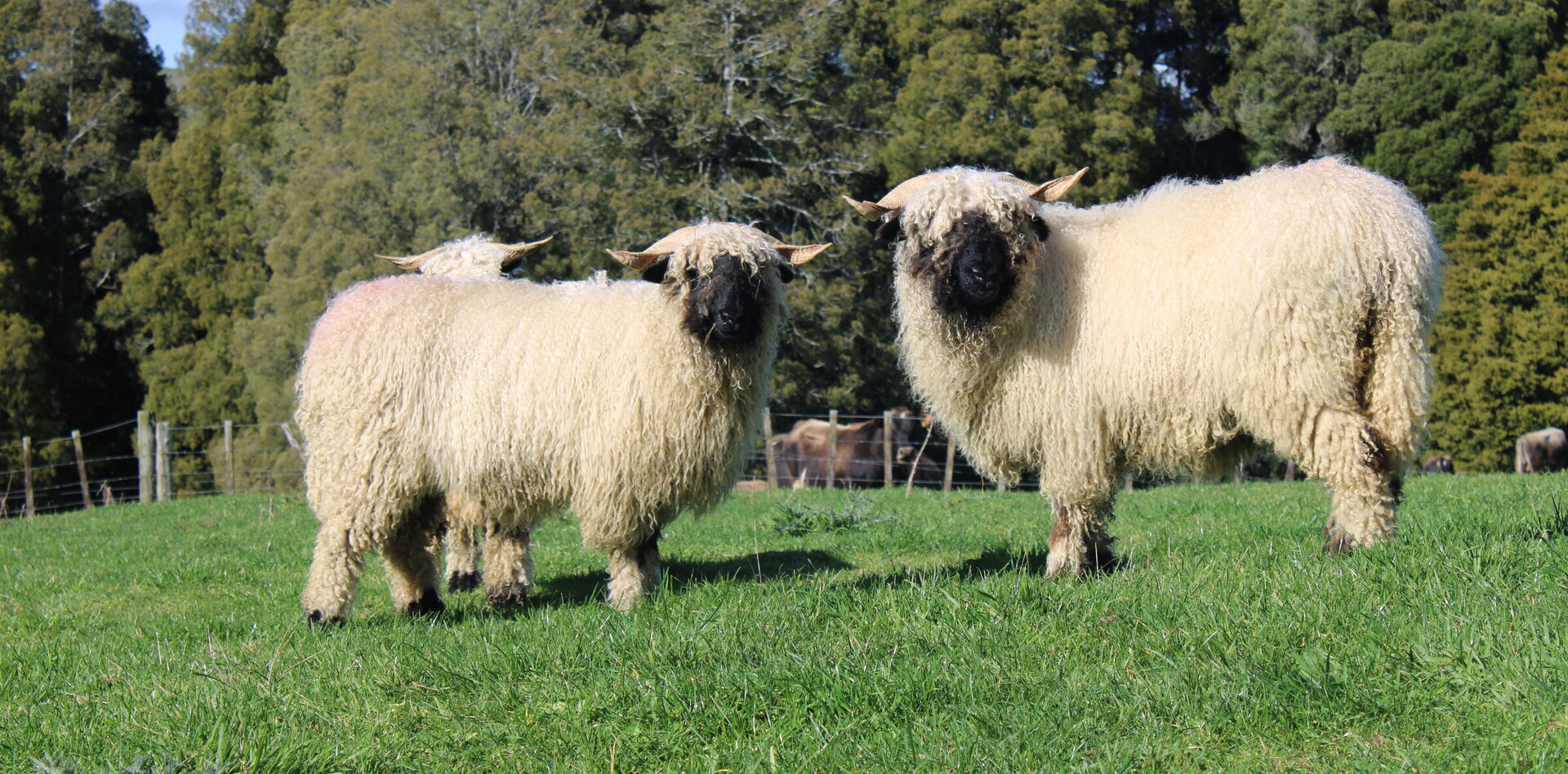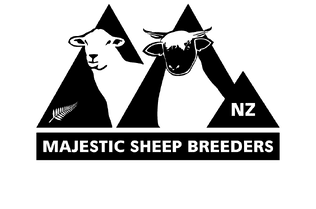Valais Blacknose Breed Standards
(Taken from the Valais Blacknose Sheep Society Uk and re-translated from the Swiss standards)
Origin and History
The black-nosed sheep is a frugal land race that is very well adapted to the harsh mountain conditions. This unique breed originates from the Upper Valais, the German speaking part of the canton of Valais. There are indications that this breed has existed since the 15th century.
Overall Appearance
The Valais Blacknose is a mountain breed of sheep with an even fleece all over the body. The horns and colour characteristics shape the unique appearance of Valais Blacknose. The Valais Blacknose has a well balanced, robust, large, solid frame.
Breed Characteristics
The name of the Blacknose sheep is derived from its black nose. The black nose extends to the middle of the face and continues without interruption to the eyes. The ears are black as well. Furthermore, there are black spots on the hocks and on the front knees. In addition, the legs are short black booted. The females have a tail spot. The whole body, including the head and the legs, should be evenly woolly.
Types
Colour Features
Black from nose to the centre of the face.
Black eye rims, both sides connected via the black nose.
Black ears.
Black, horizontal ankle colouring.
Even, black spots on the hocks and on the front knees.
In females a tail spot is desirable but it must not be too large and must be interrupted.
In males no tail spot is tolerated.
Females get a point deduction when a feature is missing, depending on type and format.
Type (format)
Withers (from two years)
Female: 72 - 78 cm
Male: 75 - 83 cm
Horns
Spiral shape, in the horizontal direction well away of the jaws.
Occasional black streaks are tolerated.
Foundation Limbs
Strong and well placed.
Not cow-hocked and not bowlegged.
Wide-legged position of the front legs (not knock-kneed).
Chest, Shoulders, Withers
Wide and deep chest.
Shoulder close fitting.
Withers broad and closed.
Good spring of ribs.
Back, Loin
Long, straight and broad back.
Wide loin.
Wool
Fineness 5-4 (36-40 microns). Staple length more than 10cm (5-6 months growth sheep should be shorn twice yearly).
Even, natural all over the body, including the head and legs.
Uniformly white, some scattered black hairs are tolerated on the neck (for males up to 18 months, this is a reason for exclusion).
Even fleece.
Docked tails must be in line with the top of the black markings on hocks.
Weight (from two years)
Female: 70 - 90 kg
Male: 80 - 125 kg
Foundation
Medium hock regulation.
Short strong ankles.
Solid bone structure.
Head and Neck
Short head.
Wide mouth, broad forehead and Roman nose.
Ears medium length.
Distinctive head shape in males.
Short, strong neck.
Pelvis, Belly, Hind Legs
Belly medium-sized with small paralumbar fossa.
Wide and medium-long pelvis.
Hind legs, well muscled.
Gait
Roomy, sure-footed and wide legged.
Not swaying.
Reasons For Exclusion
Anatomy
Jaws - condensed mandible or jaw unequal length.
Teeth - if teeth are not up to the gummy plate of fitting (up to 18 months for both male and female).
Worn through ankles/hooves
Dwarfism
Single testicle
Testicular sac rapture
Wool
Short hairs or like twine.
An excessive number of guard hairs.
Mixed-coloured wool up to the age of 18 month in the males.
Colours Features
In males body spots within the fleece area (above the belly line), tail spots and the absence of a colour feature.



